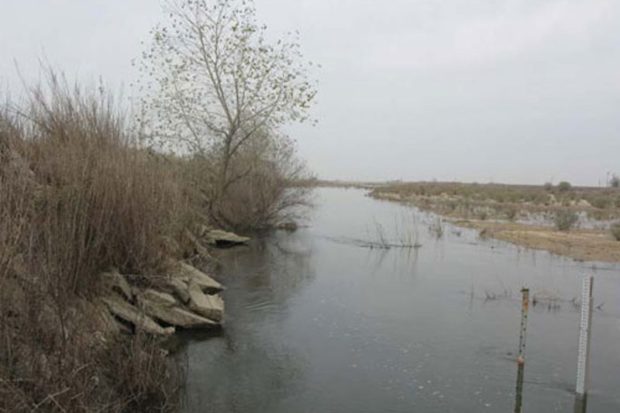
By Vic Bedoian

The conservation group American Rivers in April released its annual list of the nation’s most endangered rivers, and topping that list is our very own San Joaquin River. American Rivers, a Washington, D.C.–based organization, cited outdated resource management and excessive water diversions as the reasons why the San Joaquin is at greater risk than any other river in the United States.
The river supports more than two million acres of agriculture in its vast riparian watershed along with declining species of wildlife. The river is a major source of freshwater flowing through the Bay Delta, the largest estuary on the Pacific Coast. The San Joaquin and its tributaries also generate hydropower and provide drinking water for the San Francisco Bay Area.
The embattled San Joaquin is one of California’s two major drainages, the other being the Sacramento. It’s born beneath the lofty flanks of peaks in the Sierra Nevada. But nearly 70 years ago, the Bureau of Reclamation built Friant Dam 20 miles north of Fresno creating Millerton Lake. Since then, the major flow of the river has been used mainly for irrigating crops and supplying cities. Some 50 miles downstream of the dam so little water was left that the river died a quiet death by sinking into the ground.
All the tributaries of the San Joaquin have been dammed also. The river has become plagued, as well, with pollutants including pesticides, and salts like Selenium from farming runoff in concentrations that river-watchers say are a clear and present danger to wildlife. Now a restoration effort has begun to revive it. The American Rivers listing of the San Joaquin as the country’s most endangered river comes at a critical time.
John Cain, American Rivers’ Berkeley-based representative, said the river’s fate lies in the hands of decisions made by state agencies, “The San Joaquin is No. 1 because it’s at a real tipping point right now. Government officials are poised to make a couple of very important decisions about the future of the river. Most importantly, the State Water Resources Control Board will make a decision about how much water to release from the tributaries to the San Joaquin [and] the Stanislaus, Merced and Tuolumne rivers.”
The San Joaquin restoration effort was enacted by Congress after 18 years of legal wrangling. A landmark court decision in 2004 ruled that the river had a right to live and required that it be brought back to life as a free flowing river again. A restoration project led by the Bureau of Reclamation and local groups is now working to restore the river and its historic Chinook salmon runs. American Rivers is urging the state to let enough water flow through the San Joaquin to help endangered species survive, heal the riparian ecosystem and provide downstream farmers with enough water to weather the effects of the drought this year.
However, current legislation in the House of Representatives sponsored by Rep. David Valadao (R–Hanford) and supported by other local members of Congress would void the restoration agreement and curtail water flows for the environment.
Cain observes that would be a setback for all concerned, “Overturning environmental protections is not going to make it rain or bring more water, and it’s probably going to bring a lot more litigation because Congress’ passage of the Restoration Settlement Act ended long litigation, and no one wants to go back to the courtroom.”
Cain emphasized, “There was a great collaborative effort between the Natural Resources Defense Council, the Pacific Coast Federation of Fishermen, the Bureau of Reclamation and the water users. We just don’t want Congress to do something stupid and overturn that effort because of a drought.”
Cain highlighted the benefits that a restored San Joaquin River bestows on the economic and environmental life of the Valley, stating that the river should be allowed to flow its entire length to the Bay Delta and the Pacific Ocean as nature intended, “I think American Rivers recognizes the enormous potential for restoration of salmon and riparian wetlands and forests along the San Joaquin River and throughout the Central Valley and Delta. I was just out on the San Joaquin River Wildlife Refuge where only 10 years ago a restoration effort began and now the trees are 50 feet tall.”
American Rivers also included in its top 10 list of endangered rivers the upper Colorado River system because of trans-mountain water diversions, the Middle Mississippi River for outdated flood management, new water diversions threatening the Gila River in New Mexico, gas and oil drilling risks to the White River in Colorado and the Haw River in North Carolina for polluted runoff.
*****
Vic Bedoian is an independent radio and print journalist working on environmental justice and natural resources issues in the San Joaquin Valley. Contact him at vicbedoian@gmail.com.
